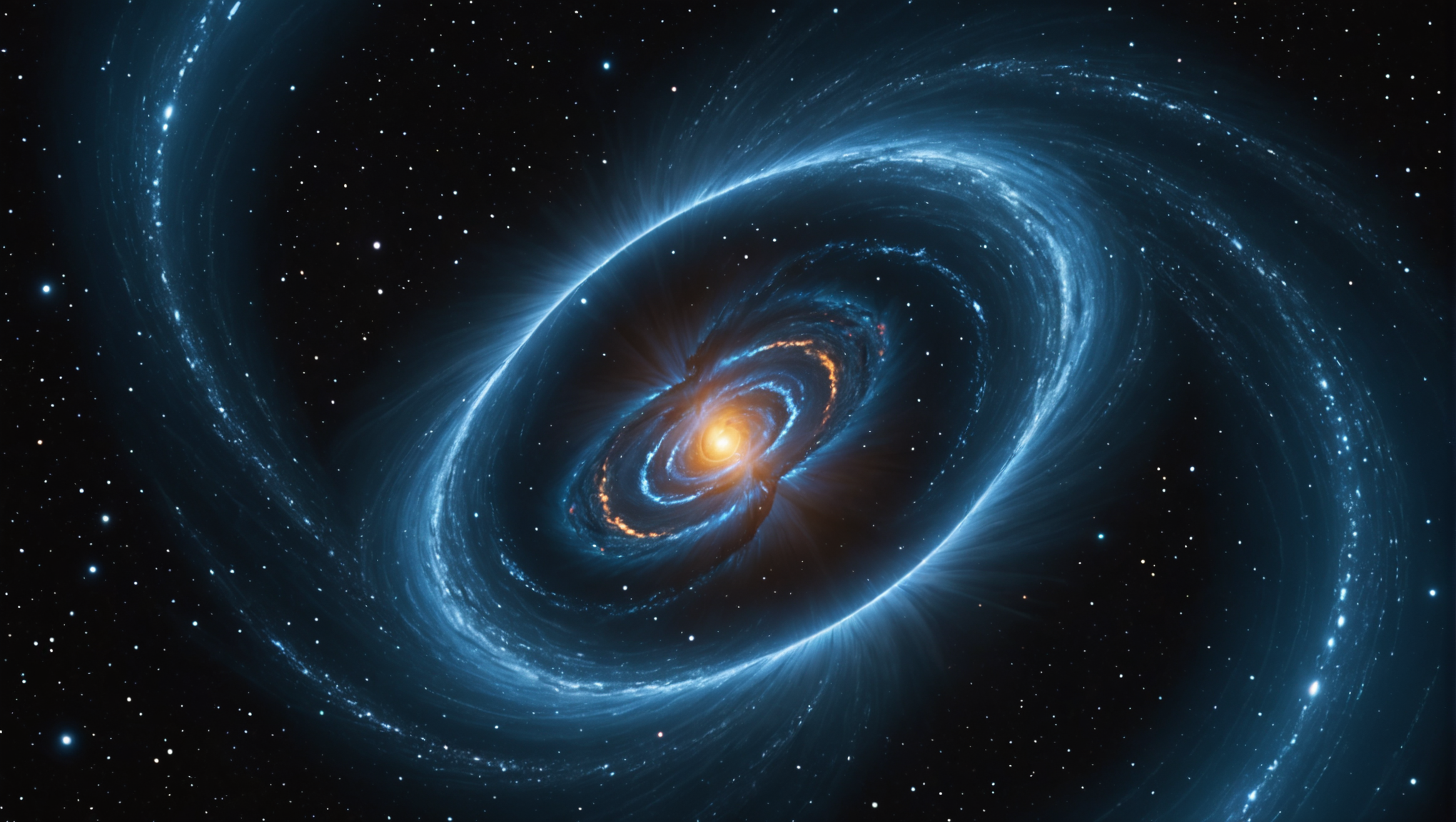Unveiling the Cosmos’ Greatest Mysteries

Mysteries of Celestial Objects and Phenomena
Every moment, the universe engages in a quiet dialogue with us, whispering its secrets to those who are keen enough to listen. Beyond the glow of countless stars, celestial objects leave us with profound mysteries that intertwine the fates of galaxies and challenge our understanding of the cosmos. Perhaps one of the most intriguing among these is the neutron star, a remnant of a massive star that has undergone a spectacular supernova explosion. Imagine a core this is just 20 kilometers in diameter, yet contains the mass of about two suns; the density is so staggering that a single teaspoon of neutron star material would weigh as much as an elephant.
Neutron stars are not just solitary entities; they’re known to exhibit pulsar activity. These remarkable stellar objects rotate at astonishing speeds—some complete a rotation in merely milliseconds, emitting beams of radiation that sweep across space much like the light from a lighthouse. Every time a beam crosses our line of sight, we receive a pulse, the rhythm of which offers insights into the fundamental forces and dynamics governing such exotic phenomena. Studying pulsars allows us to explore gravitational physics in ways that traditional celestial mechanics cannot.
Just beyond the realm of neutron stars, rogue planets introduce a new level of complexity to our understanding of planetary bodies. Unlike typical planets that orbit a star, these enigmatic wanderers drift aimlessly through the cosmos, free from any gravitational anchor. Estimates suggest there may be billions of these solitary entities in our galaxy, hinting at a tumultuous past where gravitational interactions evicted them from their original star systems. Their existence prompts us to rethink not just planetary formation, but also the very dynamics that shape our understanding of celestial neighborhoods.
As we delve deeper into the cosmos, black holes emerge as one of its most profound enigmas. These regions of space are characterized by gravitational pulls so powerful that nothing, not even light, can escape their grasp. Exploring their mechanics, we uncover the existence of supermassive black holes residing at the centers of galaxies. The sheer scale of these giants can be daunting; they can harbor millions, or even billions, of solar masses. This central darkness impacts the evolution and formation of galaxies themselves, effectively shaping the architecture of the universe.
Our understanding of galaxies is further enriched by studying their structures: spiral galaxies with their eye-catching arms, elliptical galaxies that radiate a more uniform shape, and the irregular galaxies that defy conventional categorization. Each type unveils a distinctive chapter in the cosmic story, revealing the processes that govern their evolution, star formation, and interactions within larger cosmic frameworks. They us, in a sense, to think about the gravitational forces that weave the tapestry of the universe.
The aforementioned galaxies also serve as canvasses that host a plethora of phenomena, such as quasars—some of the most luminous entities known in the universe. They represent galaxies with supermassive black holes at their centers, surrounded by discs of gas and dust. As material falls into these black holes, it releases vast amounts of energy, making quasars appear brighter than entire galaxies combined. Observations of quasars not only illuminate the nature of black holes and galaxy evolution but also offer invaluable tools for measuring distances and the distribution of matter across the cosmos.
Amid these stellar wonders lies the dark matter puzzle—a silent yet influential player in the universe’s grand design. Comprising approximately 27% of the universe, dark matter interacts primarily through gravity, steering the orbits of galaxies and clusters but remains invisible to the naked eye and traditional telescopes. What is fascinating is the discovery that galaxies rotate in ways that suggest an unseen mass influencing them. This dance of dynamics has led researchers on a quest to unlock the properties of dark matter, raising profound questions about its role in shaping our existence.
Each of these celestial objects and phenomena illustrates the universe’s marvels and bewilderments, serving as reminders of our journey—one that stretches beyond comprehension yet continues to fuel our curiosity. With every observation, we are offered glimpses into the extraordinary fabric of the cosmos, further igniting our quest for knowledge about what lies beyond our home planet. As we strive to decode the dialogues of the universe, we find that each mystery beckons us ever closer to the heart of existence itself.

The Enigma of Dark Matter and Dark Energy
The enigma of dark matter and dark energy represents one of the most compelling challenges facing contemporary astrophysics. Together, they comprise about 95% of the universe, yet their nature continues to elude us, obscuring the fundamental mechanics behind cosmic evolution. Dark matter, which constitutes approximately 27% of the universe, does not emit, absorb, or reflect light, making it imperceptible to traditional means of detection. Its presence is surmised through gravitational effects observed in visible matter—specifically, the way galaxies rotate. When we analyze how stars within galaxies move, we uncover a striking discrepancy. According to Newton’s laws, stars on the outer edges of galaxies should spin more slowly due to the gravitational pull of the mass concentrated at the center. Yet, they zip along at remarkable speeds, hinting at a hidden mass that is guiding their paths. This invisible mass, theorists propose, is attributable to dark matter.
Further evidence for dark matter arises in the study of galaxy clusters. As massive structures that contain hundreds, sometimes thousands of galaxies, these clusters reveal even more profound discrepancies when researchers calculate their total mass. Observations consistently indicate that visible matter—the galaxies themselves—is inadequate to account for the gravitational binding of the clusters. Instead, a significant amount of invisible matter must exist, clumped around these visible galaxies, creating halos that exert enough gravitational pull to maintain their cohesion. This understanding of dark matter has led to sophisticated computer models that simulate how it interacts with regular matter, illuminating a cosmic tapestry that’s far more complex than it appears.
The implications of dark matter extend beyond the mere contours of galaxies. It plays an integral role in the formation of large-scale structures within the universe. Simulations of cosmic evolution suggest that dark matter acted as a scaffolding for ordinary matter, pulling gas and dust together to form stars and galaxies over billions of years. Without dark matter, the universe would appear quite different—a place where galaxies may not have been able to form at all or be too dispersed to sustain star systems. In this sense, dark matter is a hidden architect, shaping the very structure of the cosmos.
Equally perplexing is the phenomenon of dark energy, which constitutes the remaining approximately 68% of the universe. Dark energy is believed to be the driving force behind the universe’s accelerating expansion, a remarkable discovery made in the late 1990s when astronomers observed distant supernovae. When plotted, these results indicated that rather than slowing down as one would expect from gravitational interactions, the expansion of the universe is in fact accelerating. This conclusion raises questions about what dark energy truly is and how it interacts with the fabric of space and time.
At its core, dark energy appears to exert a repulsive force counteracting the attractive nature of gravity. This unique property creates a delicate balance in cosmic dynamics. As the universe expands, gravity strives to pull matter together, but the relentless push of dark energy stretches the fabric of the universe, forcing galaxies further apart. The eventual fate of the cosmos hinges on this balance; if dark energy continues to outpace gravity, the universe may end in a state dubbed the “Big Freeze,” where galaxies drift apart into an ever-growing void.
Investigating dark energy involves an understanding of the equations governing the universe and analyzing the large-scale structure of the cosmos. Current experiments, such as the European Space Agency’s Euclid mission and NASA’s upcoming Wide-Field Infrared Survey Telescope, aim to map the distribution of galaxies and their movements, elucidating the effects of dark energy on cosmic evolution. By studying the dynamics of galaxy clusters and employing precision cosmological models, researchers are working to unlock the fundamental properties of this elusive force.
As the quest to uncover the mysteries of dark matter and dark energy progresses, it forces us to confront profound philosophical questions about the nature of existence. We inhabit a universe that is largely composed of entities we cannot directly observe nor fully comprehend—an astonishing reality that evokes both wonder and humility. With every new discovery we make, we not only incrementally sharpen our understanding of the cosmos, but we also deepen the philosophical inquiries about our place within it. The pursuit of knowledge, influenced by dark matter and dark energy, continues to open doors to realms of thought that beckon us to ponder beyond the confines of our current understanding, reminding us that the cosmos is vibrant with secrets waiting to be revealed.

The Search for Extraterrestrial Life and Habitability
In our relentless quest to understand the cosmos, the search for extraterrestrial life remains one of the most compelling frontiers of state-of-the-art science. As we gaze into the vastness of space, we think age-old questions: Are we alone? What does it mean for a world to harbor life? At the crux of this exploration lies the concept of habitability, which encompasses the necessary conditions for life as we know it to thrive.
Central to this discussion is the presence of liquid water, often referred to as the essential ingredient for life. On Earth, water is a universal solvent, facilitating biochemical reactions vital for all known living organisms. This emphasis on water has directed astronomers’ attention toward exoplanets—those worlds orbiting stars beyond our solar system—especially those located in what scientists describe as the “Goldilocks Zone.” This is the region around a star where temperatures are just right to maintain liquid water on a planet’s surface, neither too hot nor too cold.
Exoplanets such as Proxima Centauri b, a mere four light-years away, have become enticing targets for study. Nestled within the habitable zone of its red dwarf star, this planet raises tantalizing possibilities for life. The combination of proximity, favorable temperature zones, and ongoing research into its atmosphere—a key component indicating potential habitability—fuels our hopes of discovering life beyond Earth. Moreover, other exoplanets in the TRAPPIST-1 system, with its seven Earth-sized planets, draw intrigue due to their varying potential for supporting life. Scientists are now diligently investigating their atmospheres for the presence of biosignatures—chemical indicators that may suggest active biological processes.
The icy moons of our own solar system—Europa, Enceladus, and Titan—further expand our horizons regarding potential life. Europa, encased in a thick layer of ice, conceals a vast subsurface ocean. Researchers speculate that this hidden ocean, kept warm by geothermal processes, may have the conditions suitable for life—despite the frigid and seemingly inhospitable surface. Enceladus, notably, has geysers that eject plumes of water vapor rich in organic compounds, hinting at a dynamic oceanic environment beneath its icy crust. Titan, Saturn’s largest moon, possesses lakes of liquid methane and an atmosphere thick enough to support chemical processes that differ markedly from those on Earth. Each of these locations serves as a reminder that life can take on forms we may not yet comprehend, pushing the boundaries of our understanding of habitable environments.
As our technology leans heavily into advancements in spectroscopy and imaging, our ability to detect signs of life in these environments increases. Telescopes equipped with powerful spectrometers analyze the light from distant exoplanets, revealing vital information about their atmospheric composition. For instance, the detection of water vapor, oxygen, and methane in the right balance could indicate the presence of life, serving as specific biosignatures we could aim to identify in extraterrestrial worlds.
Nevertheless, the search for extraterrestrial life also hinges on our understanding of life’s origins on Earth. By studying extremophiles—organisms that thrive in Earth’s most harsh environments—we glean vital insights into how living organisms might adapt under different conditions, mimicking those found on other planets. These organisms showcase life’s resilience and versatility, suggesting that if life can flourish in acidic springs or the icy depths of the Antarctic, similar life forms could exist in extreme conditions on distant worlds.
Together, all these discoveries inform our ongoing explorations and inspire ever-deepening inquiries into the mysteries of life beyond our own planet. The realms of astrobiology, exoplanet research, and planetary science intersect, creating a rich tapestry of knowledge as we advance our understanding of what it means for a world to be habitable. With every new discovery, we are reminded of the complexities of the universe that beckon us to seek further, revealing not just the possibility of life among the stars but also the profound link between our existence and the cosmic story unfolding around us.